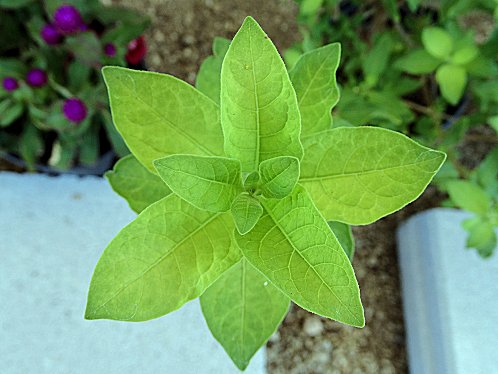Non - Xeriscape.
Common Landscape Plants. Shrubs, Flowers, & Trees.
For The Arizona Desert Environment
Pictures, Photos, Images,
Descriptions, & Reviews.
Blue Potato Bush, Lycianthes rantonnei.
We Are Proud Of Our SafeSurf Rating!
Click On Any Of The Following Links By Amazon.Com
For Books, & Videos About Wildflowers Of Arizona & The Southwest USA. No Obligation!
 |
| Blue Potato Bush, Lycianthes rantonnei. Flowers. Photo Courtesy Of Wikipedia, the free encyclopedia. |
|---|
 |  |
| Blue Potato Bush, Lycianthes rantonnei. Flower. | Blue Potato Bush, Lycianthes rantonnei. Leaves. |
|---|
Blue Potato Bush.
We wish to thank Wikipedia, the free encyclopedia for some of the information on this page. We share images and information with Wikipedia. Lycianthes rantonnetii (Blue Potato Bush) is a species of flowering plant in the family Solanaceae. It is native to Brazil, Bolivia, Argentina and Paraguay. It is cultivated as an ornamental the world over. The Blue Potato Bush is just one of about 150 species in the genus Lycianthes, which are found mostly in the tropical regions of the Americas, and some others which are located in the Asia-Pacific region. Lycianthes is apparently closely related to the chili peppers (Capsicum). However, it was long confused with the nightshades (Solanum), and several little-known Solanum species which probably should be included with Lycianthes.
Quick Notes:
Height: Up to 10 feet tall. 10 feet spread. Normally about 6 feet tall. With a 6 foot spread.
Bark: Grayish-brown, thin, smooth.
Trunk: 3 to 8 inches in diameter.
Flowers: Lavender, purple, deep violet blue flowers, 1 inch in diameter (2.5 cm), with a yellow center. Inflorescence axillary, sub-umbellate cluster of 2-5 somewhat zygomorphic flowers; pedicels 15-25 mm long. Calyx 4�5 mm long; lobes 2 mm long, linear, 5 well-developed with secondary lobe sometimes developing between to give 10-lobed effect. Corolla rotate, 20�30 mm diam., bright blue, upper 3 lobes with yellow patch at base. Anthers unequal, upper pair slightly smaller, c. 3 mm long, oblong.
Blooming Time: March through October in cooler climates. Sometimes year around in warmer climates.
Leaves: Leaves are alternate, elliptic to ovate, & slightly rough-surfaced, They are about 1.6 to 6 inches long (4-15 cm), & 0.8 to 3 inches wide (2-7.5 cm).
Fruit: A berry. sub-globose-ellipsoid with cordate base, 27�30 mm long, yellow in color.
Seeds: Dark brown, 2.5 mm long, Stone cells numerous, c. 1.5 mm wide. About 24 seeds per berry.
Found: Native to Brazil, Bolivia, Argentina and Paraguay. It is cultivated as an ornamental the world over. Grown in Arizona. Lower elevations, below 4,900 feet.
Elevation: Below 4,900 Feet.
Hardiness:
Soil pH requirements:
6.1 to 6.5 (mildly acidic)
Habitat: Sunset climate zones: 12-13,15-27. Cold hardiness zones: 11 - 8b .
Miscellaneous: Once established, needs only occasional watering. Almost xeriscapic. Flowering Photos Taken August 08, 2013 in Yarnell, Arizona. Follow a regular watering schedule during the first growing season to establish a deep, extensive root system. Feed with a general purpose fertilizer before new growth begins in spring. Pruning time: winter. Light requirement: tree grows in full sun; Soil tolerances: clay; loam; sand; acidic; alkaline; well-drained; Drought tolerance: medium; Aerosol salt tolerance: moderate.
|
We Are Proud Of Our SafeSurf Rating!
Click On Any Of The Following Links By Amazon.Com
For Books, & Videos About Wildflowers Of Arizona & The Southwest USA. No Obligation!
| © 1966 - Present, Audrey, Eve, & George DeLange |
